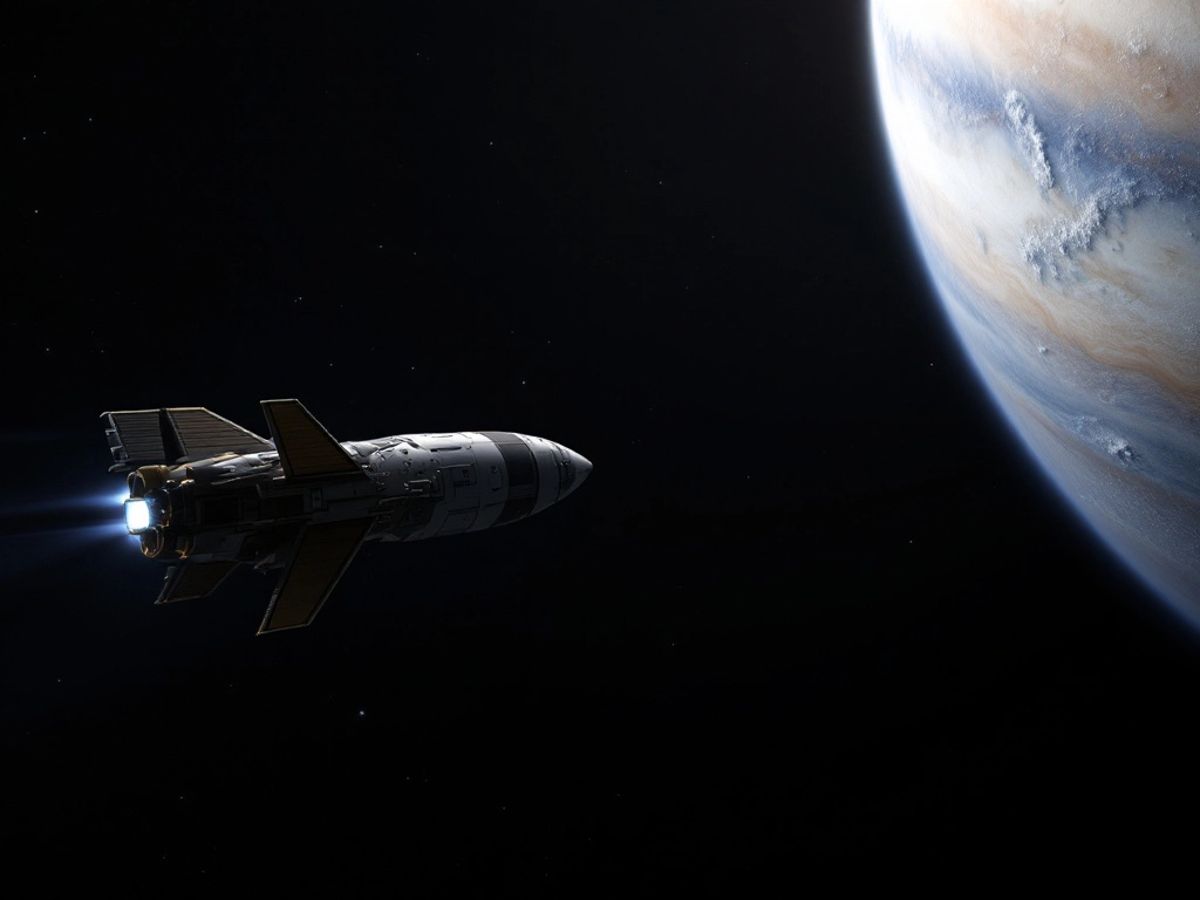NASA’s Europa Clipper has successfully launched its probe aboard a SpaceX Falcon Heavy rocket, embarking on a monumental 1.8-billion-mile journey to explore Jupiter’s icy moon, Europa.
This mission aims to investigate whether the moon’s subsurface ocean could harbor life, marking a significant step in the search for extraterrestrial existence.

Key Takeaways
- Launch Date: The Europa Clipper launched on Monday at 12:06 p.m. EDT from Kennedy Space Center.
- Mission Duration: Five-and-a-half-year journey.
- Arrival: With arrival at Jupiter expected in April 2030.
- Scientific Goals: The mission will conduct 49 flybys of Europa to assess its potential for supporting life.
The Mission Overview
The Europa Clipper mission, costing approximately $5.2 billion, is designed to explore Europa, which is believed to have a vast saltwater ocean beneath its icy surface.
This ocean may contain more than twice the amount of water found on Earth, making Europa one of the most promising locations in our solar system for finding extraterrestrial life.

Project Scientist Robert Pappalardo emphasized the mission’s goal:
“We want to determine whether Europa has the potential to support simple life in the deep ocean, beneath its icy layer.”
Launch Details
The launch was initially delayed due to Hurricane Milton and a technical issue, but the Falcon Heavy rocket successfully lifted off, generating over 5 million pounds of thrust. The spacecraft was released into its trajectory one hour and two minutes after liftoff.

NASA’s Europa Clipper Journey to Jupiter
To reach Jupiter, the Europa Clipper will first fly past Mars, utilizing its gravity to gain speed. While in orbit, the spacecraft will perform a gravity-assist maneuver around Earth in December 2026, then head to Jupiter. Upon arrival, it will enter orbit and begin its series of flybys.
NASA’s Europa Clipper Scientific Instruments
The Europa Clipper is equipped with nine advanced scientific instruments designed to gather data on the moon’s surface and subsurface. Key instruments include:
- Cameras: To map 90% of Europa’s surface with high resolution.
- Spectrometers: To analyze surface chemistry and detect signs of water plumes.
- Ice-Penetrating Radar: To investigate the thickness of the ice crust and locate pockets of liquid water.
NASA’s Europa Clipper Challenges Ahead
The mission faces significant challenges, including extreme radiation levels near Jupiter, which can be lethal to humans. The spacecraft is designed to withstand radiation, with sensitive components shielded to minimize damage. Engineers adapted the mission plan to mitigate potential risks from radiation exposure.
The Search for Life
The Europa Clipper will not directly search for life, it aims to characterize the habitability of Europa’s ocean. Scientists hope to find evidence of organic molecules and conditions suitable for life. Pappalardo noted, “What would be the greatest outcome? To find some sort of oasis on Europa where there’s evidence of liquid water not far below the surface.”
Conclusion
The Europa Clipper mission represents a significant leap in our understanding of ocean worlds beyond Earth. As it embarks on this ambitious journey, scientists are hopeful that it will provide crucial insights into the potential for life in our solar system and beyond. The mission is not just about exploring Europa; it is about unlocking the mysteries of icy ocean worlds throughout the universe. Make sure to subscribe to our blog and stay up to date with the latest NASA news around the world.
Sources
- NASA launches probe to study Jupiter’s icy moon Europa, AOL.com.
- NASA launches probe to study Jupiter’s icy moon Europa, AOL.com.
- NASA’s Europa Clipper rockets toward Jupiter in search of life beneath icy crust, KTUL.
- NASA launches a probe to find out if there really could be alien life on Jupiter’s moon Europa, AOL.com.



Leave a Reply
You must be logged in to post a comment.